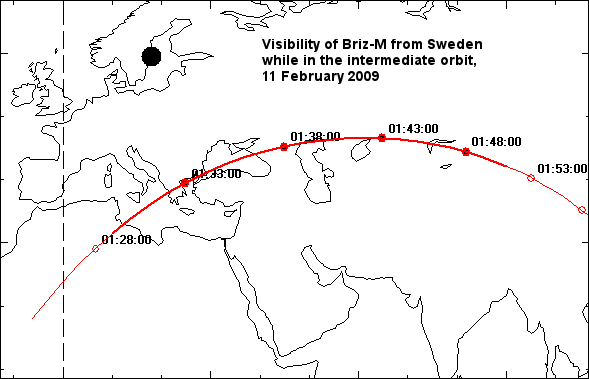
Sven Grahn
A Proton rocket was launched at 0003 UT from Complex 200 at the Baikonur Cosmodrome in Kazakhstan. The rocket carried the Express AM44 and Express MD1 satellites.
Here is the mission profile for the flight of the last stage of Proton, the Briz-M. MET here means Mission Elapsed Time.
The Briz-M upper stage was visible from Sollentuna, Sweden just after injection into the intermediate orbit and later in the transfer orbit. The maps below show these visibility zones. N.B.: These maps have not been generated using www.space-track.org orbital elements.
Details of how radio observations of Briz-M upper stages are made can be found here.

Signals were picked up immediately after the spacecraft
came above the horison in Stockholm. First at 0131-0132.02 UT, very strong
carrier was picked up on 1018.5 MHz which faded out. This signal is shown
below.
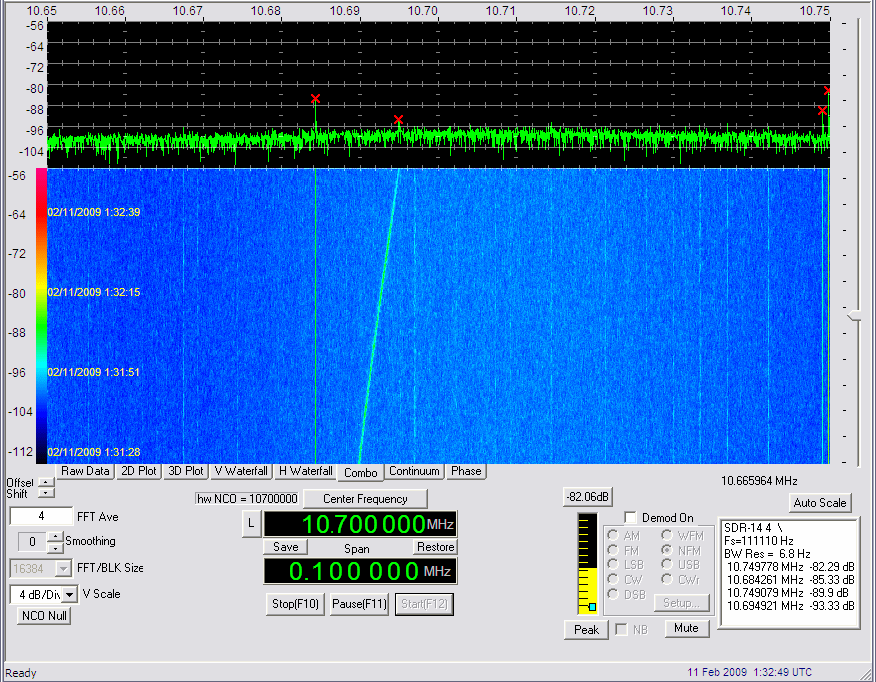
I then re-tuned the receiver to 1020.5 MHz and picked up very strong signals consisting of a several carriers at 0134.18-0135.40 UT. The signal was very strong an consisting of a carrier and at least eight side bands. I have never seen such a signal spectrum from a Briz-M before. The signal is shown in the spectrogram below. The spacing between carriers is about 6.4 kHz. The signal came back weaker on 1020.5 MHz at 0138.50-0140.06 UT. At the end of this period I retuned to 1018.5 MHz and saw signs of dual carriers.
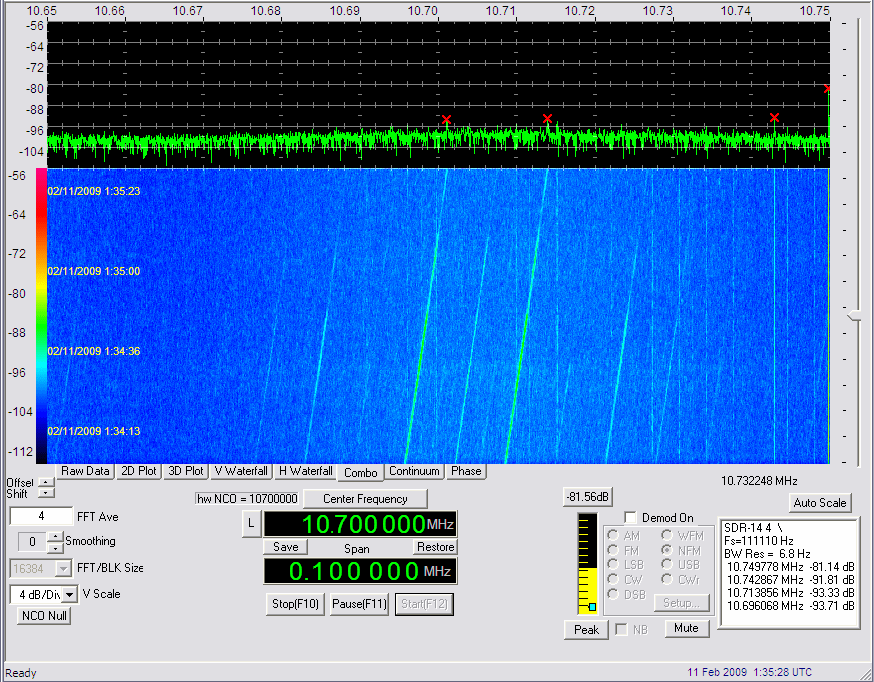
After this real-time reception I decided to return to bed (it was approaching 0300 local rime) and set the SDR software-defined receiver to making an update once every 20 seconds. I tuned the RF tuner to 1018.5 MHz, the frequency most often received from Briz-M upper stages.The visibility of the spacecraft while in transfer orbit is shown in the map below. The spacecraft rose above the horizon in Stockholm at 0353 UT. The position of the spacecraft is shown at 20 second intervals.
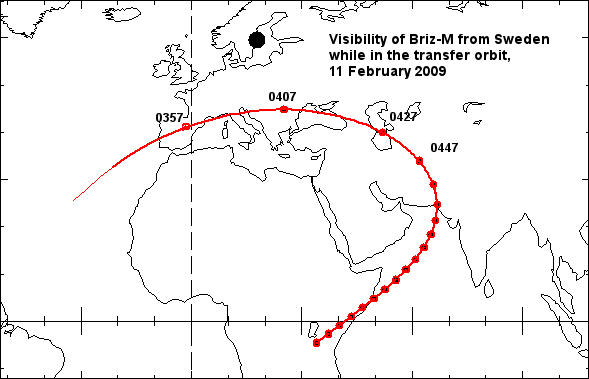
From the spectrogram below one can determine that the signal on 1018.5 MHz was picked up at about 0354 UT. As is normal during this mission phase there was a main carrier and two extra carriers at +/-16 kHz. The signal was received until 0605 UT, after which I left home and dropped tracking the spacecraft. The spectrogram below shows that the signal was interrupted regularly. One reason for this could be that the entire Briz-M and payload combination was put in a slow roll to provide a benign thermal environment - often called "the barbecue mode".. The period of the on/off cycling period is about 130 seconds and the duration of the signal each time it appears is about 60 seconds. I have never seen such behaviour from Briz-M before.
Here you can see the doppler curve, elevation and range plots during this reception.
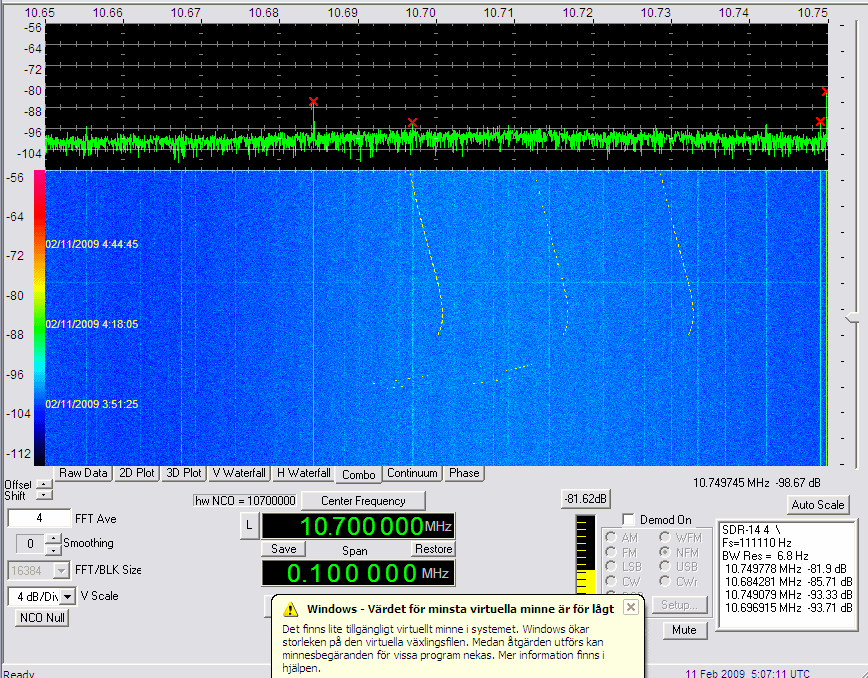
![]()